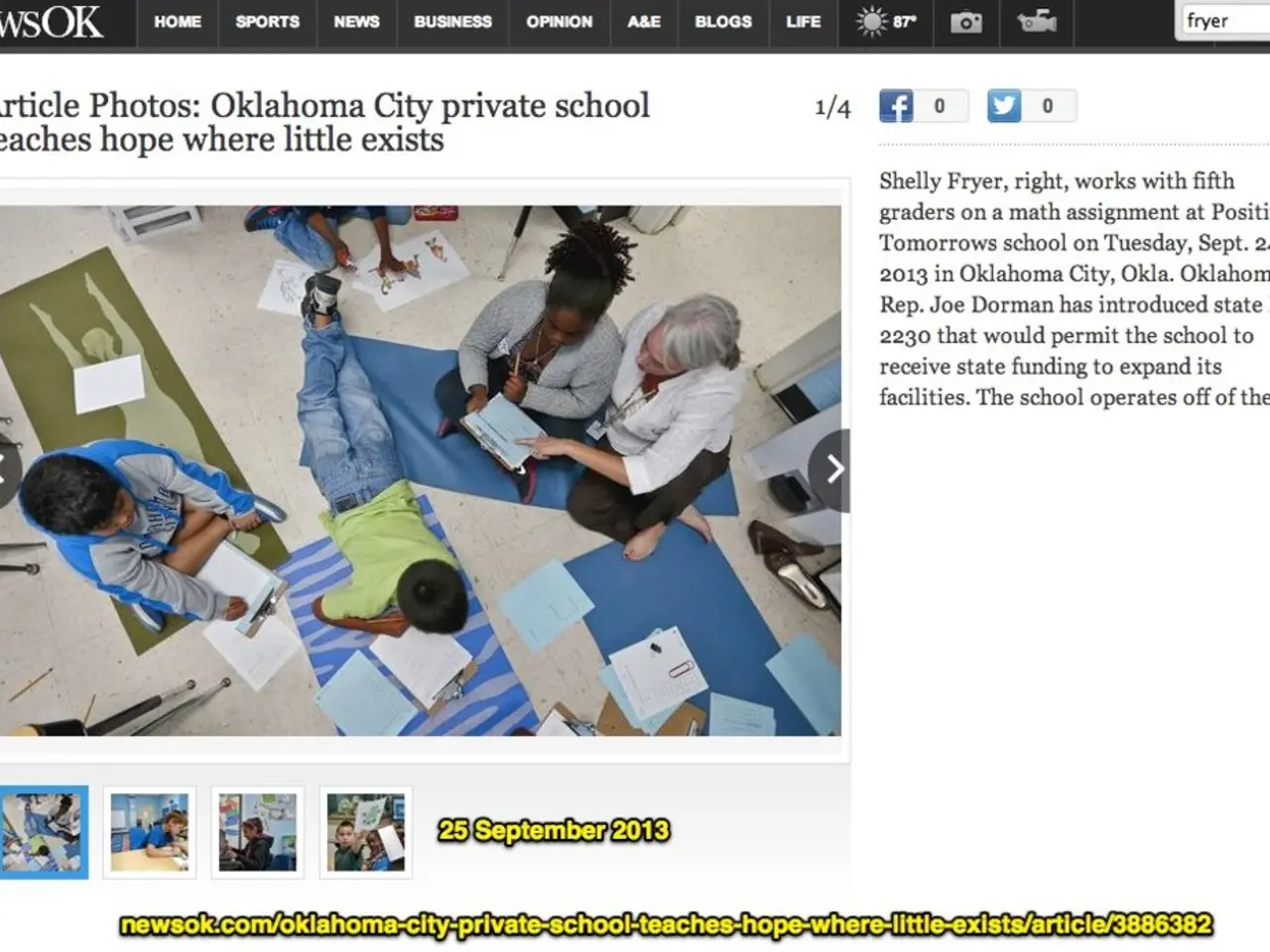Benefits and Drawbacks of Student Engagement in Social Networks
Social media has become an integral part of many students' lives, with 95% of teenagers having access to a smartphone and 45% saying they are online almost constantly [1]. While social media can offer benefits such as communication, networking, and access to information, it also poses several challenges that can impact academic performance, behavior, and mental health.
One of the most significant concerns is the reduced attention span associated with social media use. Platforms promoting short-form content reshape information processing and retention, leading about 68% of young people to report difficulties in focusing and completing schoolwork [1][3]. This attentional decline directly contributes to academic strain, as many students struggle to engage deeply with learning materials without frequent phone use.
Another issue is the addiction-like compulsive use pattern, driven by platform designs engineered to maximize engagement. This behavior raises concerns about disruption of real-life social connections and increased emotional volatility [1][3].
The mental health consequences include increased emotional fatigue, sleep disturbances, feelings of exclusion, and psychological distress [2][4][5]. Social media can exacerbate feelings of anxiety, particularly when students over-rely on it for social sharing and support without sufficient real-world perceived support from family or peers. Negative body image issues such as self-objectification and shame have also been linked to problematic use.
However, it's important to note that social media is not uniformly negative. It can foster social connections, emotional support, and reduce anxiety when used in moderation and when adequate social support buffers are present [5]. The adverse effects tend to arise primarily from excessive, unmoderated, or compulsive use.
In light of these findings, it's crucial for students to use social media responsibly. Here are some tips:
- Limit Social Media Use: Students should use social media in moderation, setting specific times for use during breaks or after completing assignments to avoid distractions.
- Take Breaks: Taking regular breaks from social media is essential for maintaining good mental health, allowing students to focus on other activities that promote well-being.
- Be Mindful of Online Interactions: Students should be mindful of online interactions and avoid engaging in negative behavior such as cyberbullying, and be cautious about sharing personal information online.
- Use Social Media for Educational Purposes: Students can utilize social media for educational purposes by joining study groups, following academic accounts, and participating in online discussions related to their coursework.
If students are struggling with social media addiction, cyberbullying, or other related issues, they should seek help from a trusted adult or mental health professional. Maintaining mental health and well-being is crucial for students, and social media use should be approached responsibly to avoid negative effects.
References:
[1] Twenge, J. M., et al. (2018). The Impact of Social Media on Adolescents' Mental Health. Pediatrics, 141(4), e20180039.
[2] Przybylski, A. K., et al. (2019). The Effects of Social Media on Adolescent Well-Being: A Theoretical and Empirical Review. Clinical Psychology Review, 73, 11-27.
[3] Kross, E., et al. (2013). Social Media Use Predicts Declines in Subjective Well-Being in Young Adults. PLOS ONE, 8(7), e69841.
[4] Wood, A. M., et al. (2014). The Psychological Consequences of Social Media Use for Adolescents. Journal of Adolescence, 46, 212-220.
[5] Ybarra, O., & Mitchell, K. J. (2016). Cyberbullying and Social Media Use: A Review of the Literature. Journal of Adolescence, 53, 289-302.
- The result of excessive social media use can lead to a reduced attention span, making it difficult for students to focus and complete schoolwork.
- Social media platforms, designed to maximize engagement, can create an addiction-like compulsive use pattern, which can disrupt real-life social connections and increase emotional volatility.
- The mental health consequences of heavy social media use include increased emotional fatigue, sleep disturbances, feelings of exclusion, and psychological distress.
- Social media can also provide benefits, such as fostering social connections, emotional support, and reducing anxiety when used in moderation and with sufficient social support.
- To maintain good mental health and prevent negative effects, students should limit their social media use, take breaks, be mindful of online interactions, and use social media for educational purposes.
- If students are struggling with social media addiction, cyberbullying, or related issues, they should seek help from a trusted adult or mental health professional.




